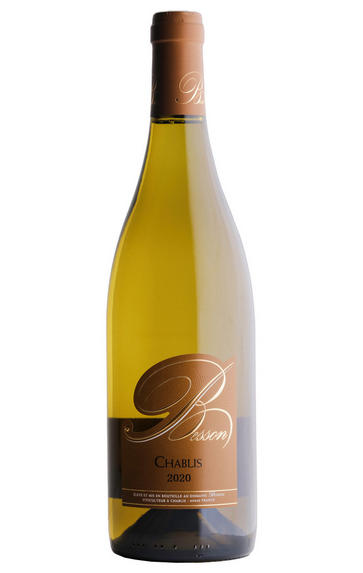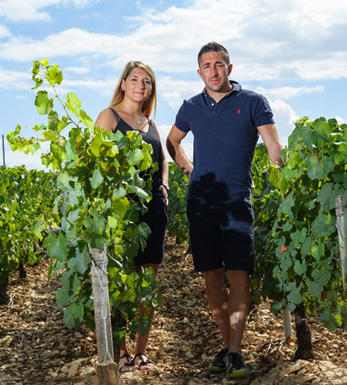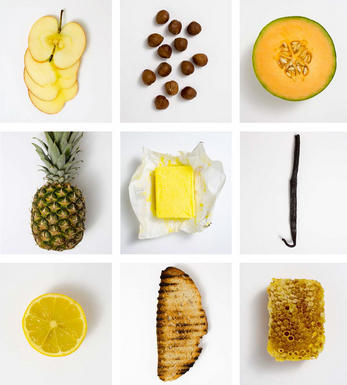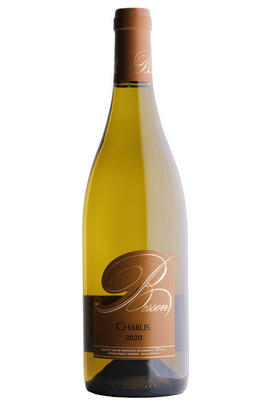
Critics reviews
Domaine Besson's history stretches back over four generations, and with Camille and Adrien now at the helm, the estate comprises all four AOPs over 21ha. Besson has just under 8ha of vines classified as Chablis AOP.
Fermentation is in stainless steel, with a proportion fermented in barrel and aged for eight months. This has added some extra nuances of flavour without diverting from the typical Chablis character of freshness, flintiness and apple and peach flavours, backed up by citrus acidity.
Drink 2022 - 2024
Andy Howard MW, Decanter.com (October 2021)
About this WINE

Domaine Besson
Domaine Besson is situated in Chablis and is well-regarded for producing exceptional wines that showcase the true essence of Burgundy's terroir.
The Domaine has a rich history dating back several generations, and it remains a family-owned and operated estate. This heritage has been passed down through the years, preserving time-honoured winemaking traditions while embracing modern techniques and innovations.
The estate's vineyards are meticulously tended, with a strong emphasis on sustainable viticulture practices. The region's cool climate and unique limestone-rich soils, known as Kimmeridgian soils, create the ideal conditions for growing premium Chardonnay and Pinot Noir grapes.
Domaine Besson's portfolio includes an array of wines that demonstrate the distinct characteristics and complexity that these grapes are famous for. From vibrant and elegant whites to nuanced and expressive reds, each wine reflects the true spirit of Burgundy's winemaking heritage.
The winemaking philosophy revolves around minimal intervention, allowing the grapes to shine through and express their unique terroir. Careful hand-harvesting, gentle pressing, and controlled fermentation are integral.
Environmental stewardship is a core value, as the estate embraces sustainable viticulture practices to protect and preserve the land for future generations. By employing eco-friendly methods and promoting biodiversity, they ensure that their wines reflect the purity of nature.

Chardonnay
Chardonnay is often seen as the king of white wine grapes and one of the most widely planted in the world It is suited to a wide variety of soils, though it excels in soils with a high limestone content as found in Champagne, Chablis, and the Côte D`Or.
Burgundy is Chardonnay's spiritual home and the best White Burgundies are dry, rich, honeyed wines with marvellous poise, elegance and balance. They are unquestionably the finest dry white wines in the world. Chardonnay plays a crucial role in the Champagne blend, providing structure and finesse, and is the sole grape in Blanc de Blancs.
It is quantitatively important in California and Australia, is widely planted in Chile and South Africa, and is the second most widely planted grape in New Zealand. In warm climates Chardonnay has a tendency to develop very high sugar levels during the final stages of ripening and this can occur at the expense of acidity. Late picking is a common problem and can result in blowsy and flabby wines that lack structure and definition.
Recently in the New World, we have seen a move towards more elegant, better- balanced and less oak-driven Chardonnays, and this is to be welcomed.



Buying options
Add to wishlist
Description
The Besson family’s Chablis come from a total 8.5 hectares of well-located vines. 5ha are in the well-regarded Vallée de Valvan (behind the 1er Cru Montmains), with 2ha in the village of Fyé and 1ha in Courgis. The wine is almost entirely made in stainless steel, with 5% in oak barrels to provide a little roundness and complexity. This is a classic expression of Chablis, with fresh orchard fruit, steely iodine minerals and a gentle dairy character on the finish.
Drink now - 2026
Adam Bruntlett, Senior Buyer, Berry Bros. & Rudd (June 2022)
wine at a glance
Delivery and quality guarantee